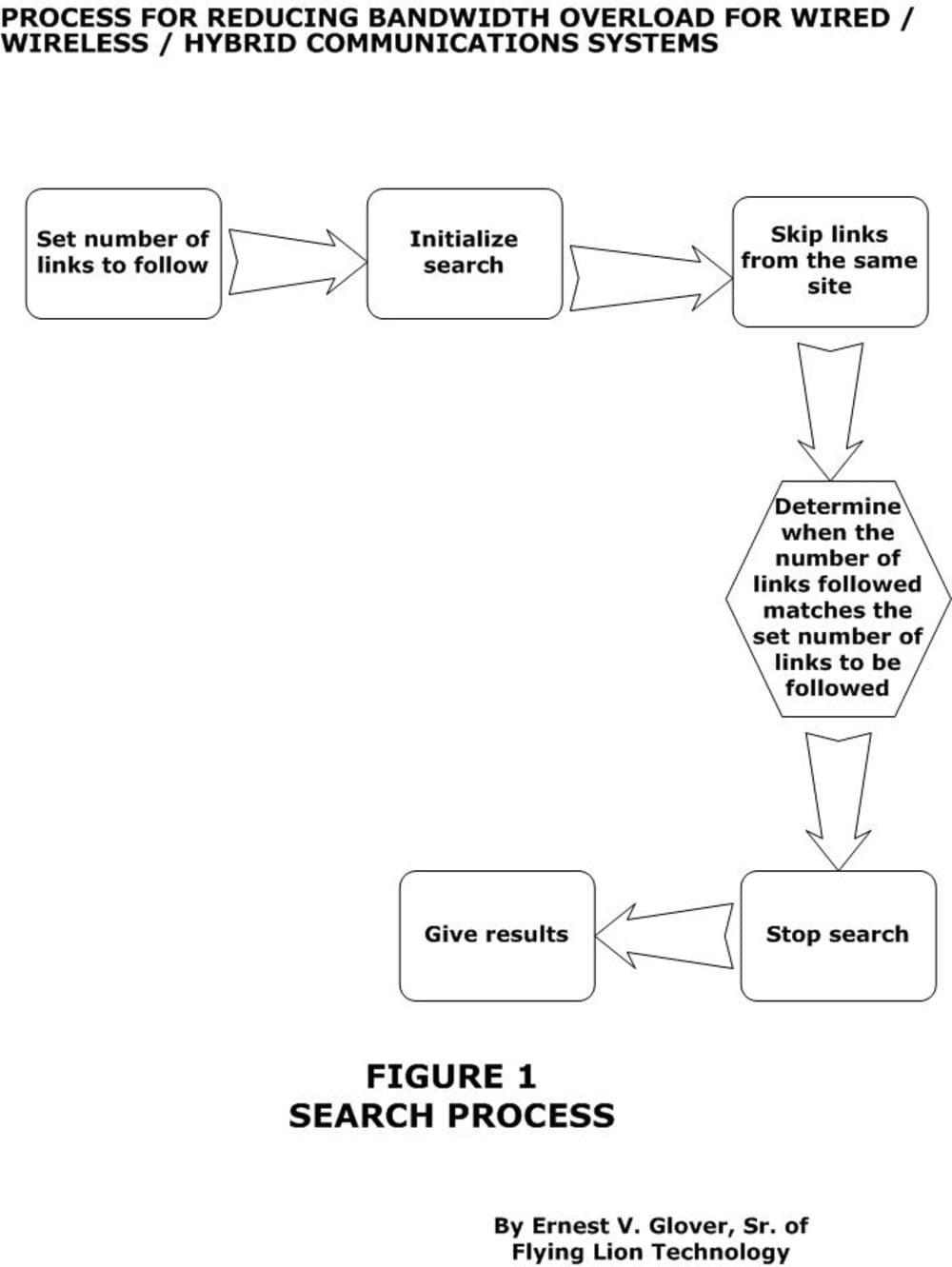This invention relates to search engines. Search engines use a lot of the available broadband radio spectrum, which contributes to sluggish performance and other system troubles. An overload of the communications system can have grave consequences: computer freezes and crashes at every level including our defense network, law enforcement agencies, and our national security efforts. There have already been situations where websites have been shutdown because hackers bombarded those sites with huge amounts of data requests. This situation is receiving a lot of attention from our government. According to an FY 2012 National Science Foundation (NSF) solicitation (NSF 11561):
”NSF seeks to help reach the nation's future broadband goals and the larger objective of alleviating growing pressure on limited radio spectrum resources. Innovative approaches, technologies, and policies are required to enable more flexible and efficient access to the radio spectrum. The stakes are high in technology development as the country that develops the key intellectual property to enable the efficient use of the spectrum and adopts new and effective spectrum regulations is expected to have strong competitive advantages in the manufacturing of new communications systems, and increased productivity in using this technology.”
Current search engines are very inefficient. A search engine “bot” will search through millions of links just to provide a small amount of useful results. Also, often there are links that come from the same website, making for a lot of redundant results.
Some methods used regarding bandwidth overload involve reducing the speed of a users device during times of peak usage, or by specifying the amount of data a user can use over a specified time period, and then penalizing them monetarily should they exceed the specified amount. Those actions show industry-wide awareness of the overload problem.
This invention is a process with the objective of reducing problems regarding associated with the amount of bandwidth used by communications devices. It provides the ability to control the number of links a search engine follows, thereby reducing the amount of data generated by the search that is held in the system’s physical memory, and reducing the amount of traffic across the web. Meeting the objective lowers the bandwidth used by each searcher. Given that millions of search transactions occur every second, even a small reduction in bandwidth usage per person will have a major impact on the amount of broadband resources used.
There are several ways to implement this invention:
1. The search engine has an automatic search limit set by the provider.
2. The user can input any value desired.
3. The user can choose from a list of search limits (like 25, 50, 100...).
Figure 1 represents the search process.
This invention can be the core of a new search engine, or a front-end to existing search engines.
Reduction of used bandwidth, increased search speed, and more control of search activities are good marketing points to the user and/or service providers.
Like this entry?
-
About the Entrant
- Name:Ernest V Glover Sr
- Type of entry:individual
- Software used for this entry:Corel WordPerfect Office Suite X5; Microsoft Visio Diagrammer
- Patent status:pending

